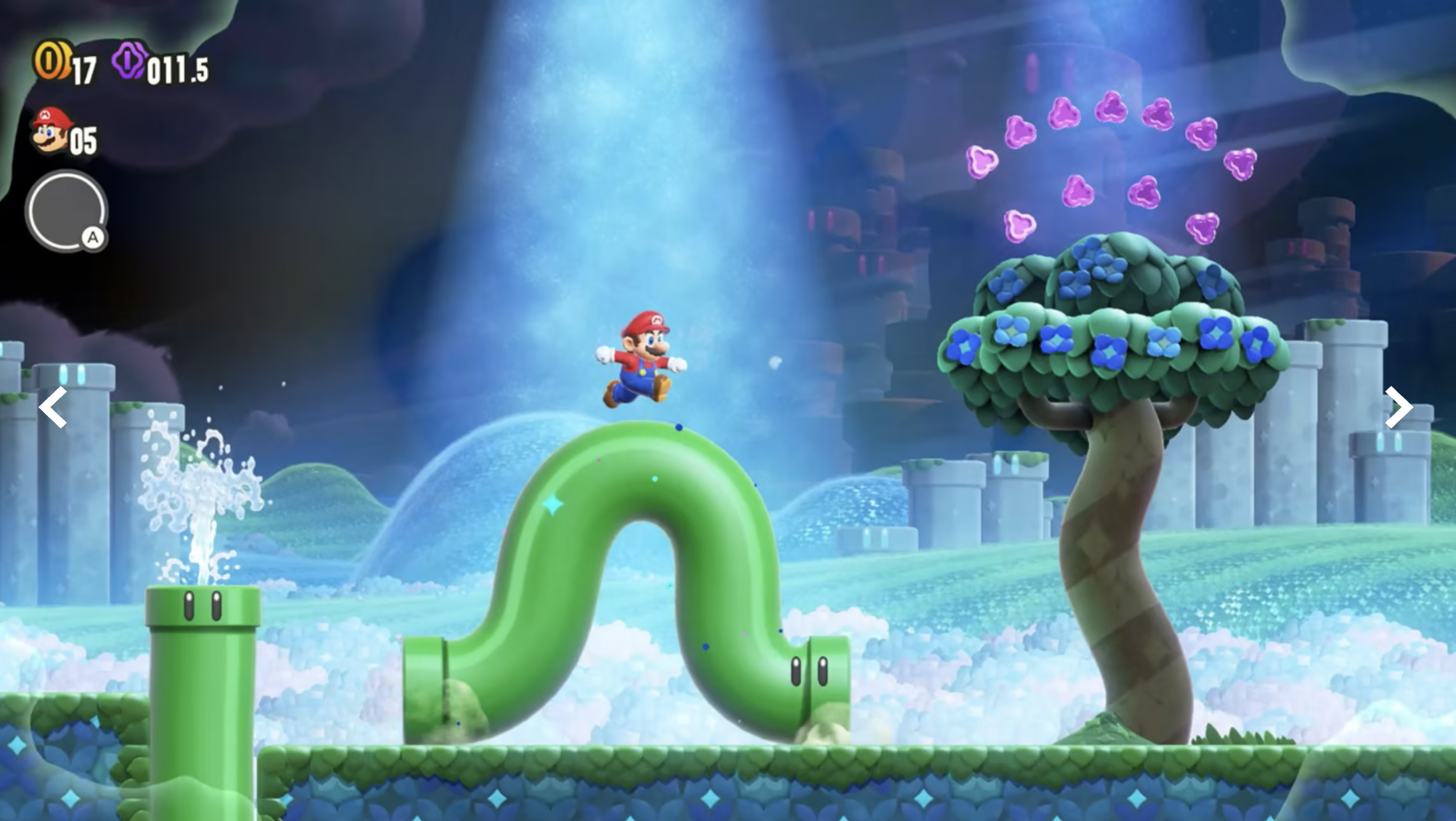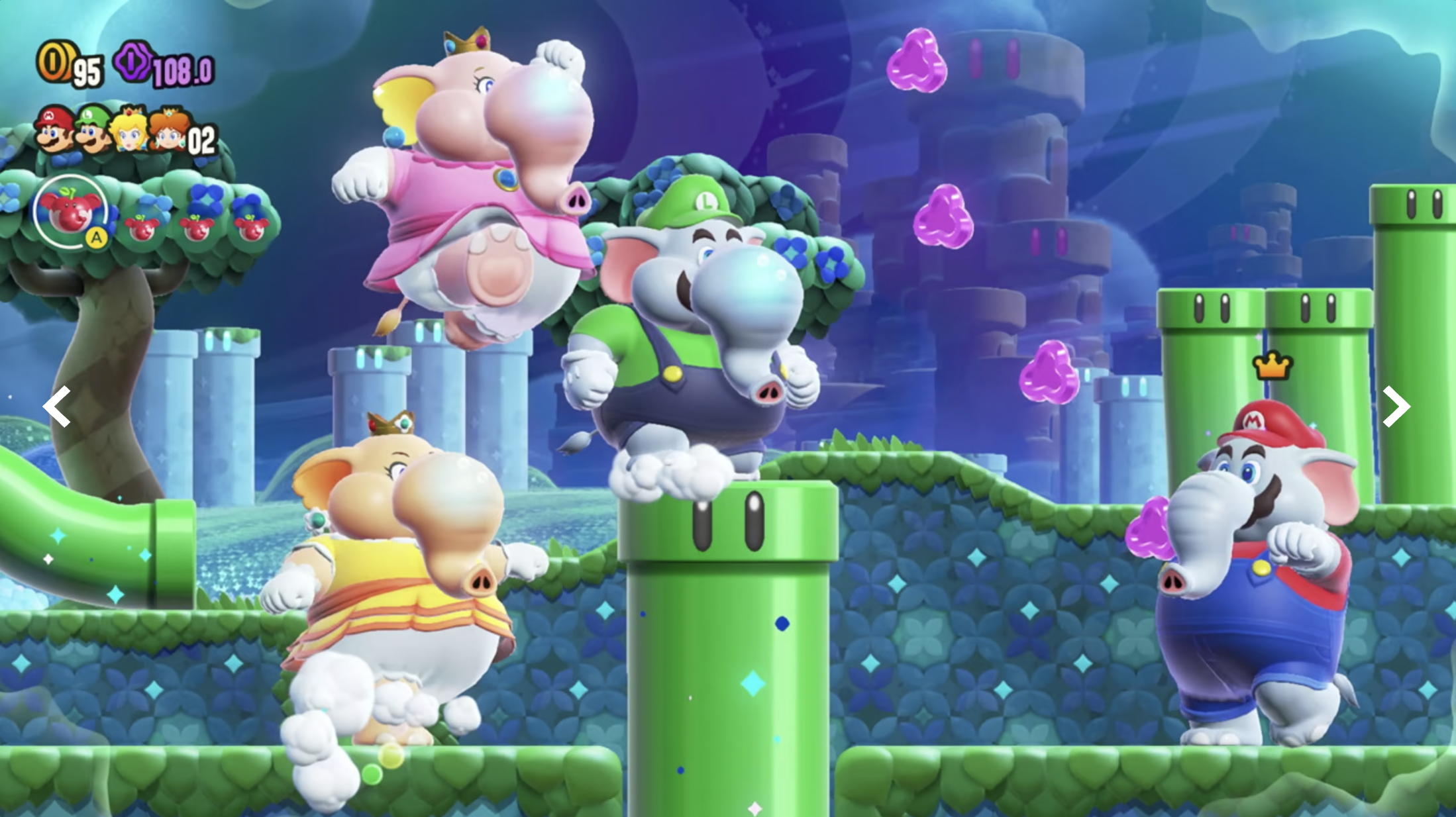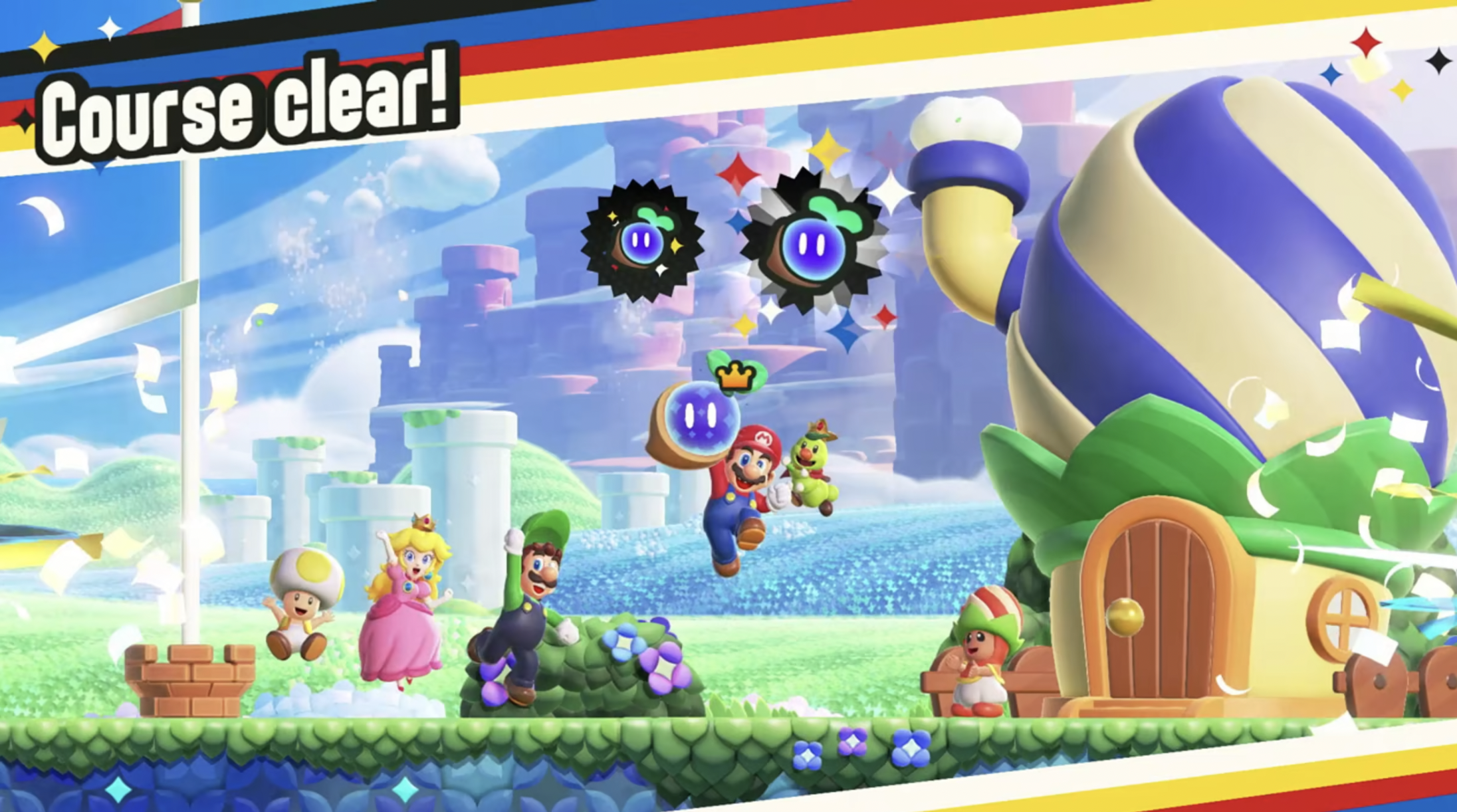[Preview] Our first hands-on with Super Mario Bros. Wonder
In the eleven years since New Super Mario Bros. U first released, 2D platformers have changed a lot. Not only are there a lot more of them overall – thanks to some very creative projects by small teams – I’d argue the genre has broadly shifted towards increasing the complexity of the overall experience. Many sidescrollers today embrace popular added-depth systems; rougelike elements, skill trees, sprawling and interconnected maps, Soulslike combat, or perhaps all of the above. These can all be great things, and I’ve certainly made some amazing memories with some out-of-left-field projects over the past decade, but sometimes it’s nice to experience a platformer where the joy comes not necessarily from overcoming a complex challenge or system, but from something simpler. For me, in the case of Super Mario Bros. Wonder, that joy came from being surprised. And in my recent 30 minute demo session with the game, I found myself being surprised at almost every turn.
Super Mario Bros. Wonder certainly has added depth over previous Mario platformers – it too has embraced the idea of a fluid and customizable skillset, with its new Badge system. During a playthrough, players will unlock new abilities that can be equipped before starting a stage, or after Mario and friends lose a life. These badges can do anything from letting characters glide in midair, to swimming faster underwater, to magnetically drawing coins toward the player that are within a certain range. These little tweaks are simply options, though – they can make aspects of the game a bit more approachable, perhaps, or give an extra traversal option, but they can also be ignored by players who would rather run and jump around. They’re all simple to understand at face value, and many of them are passive abilities, so they provide a way to shake up the experience without demanding too much of the player.

But the highlight of my playthrough – in which I demoed stages both solo and in local co-op play alongside fellow PAX attendees – was simply basking in the incredible world that Nintendo has created. While the new setting of the Flower Kingdom shares similar environmental themes to the Mushroom Kingdom from other Mario games, each stage I played felt truly new. The Wonder Flowers are obviously a big element of this, promising to shake up each level in bizarre and strange ways, from making Warp Pipes dance and bounce around to sending a flurry of Super Stars raining from the sky. This alone means a thorough player could probably get two distinct-feeling playthroughs out of each stage, and possibly more. One stage in the first world had a huge underground area that was big enough that it probably could have been its own level in an earlier Mario game. In a big shakeup for the series, none of these stages are timed; this means that players are more free to explore than ever without being penalized, and so far I feel like this was a great decision.
The new enemies – of which there seem to be very many – are also a big contributing factor to helping Super Mario Bros. Wonder feel truly fresh. Some of them are mechanically similar – Konks are basically just Thwomps – but others, like a really fast gopher-esque creature who steals things you probably want to collect before sprinting across the map – were a really pleasant surprise every time I encountered them.

Movement in the game feels absolutely incredible. Mario platformers have always felt really natural to me, and they lend themselves well to being picked up quickly just by their nature, but I don’t think Mario has ever felt so fluid and nimble as he does in Super Mario Bros. Wonder. When you jump in the air, you always feel in complete control; when you land on the ground, your momentum never falters, but it’s easier than ever to turn on a dime and somersault in the other direction. Badges offer additional options too, like turning your wall jump into more of a wall scramble, and making it a bit easier to get impressively high. The incredible animation goes a long way to making the cast feel more alive, from the way Mario pulls himself out of a pipe to the way Yoshi visibly strains when carrying an elephant-sized character on his back. That sense of flourish extends into the sound design – and while it was hard to hear all of the details in the crowded expo hall of Nintendo Live, I loved details like how a cymbal clashes during a ground pound. I need to hear more from our talking flower friend before I can pass judgement on the quippiest Mario character in a while, but so far I’ve found the botanical buddy charming.
Local co-op retains all the fun of single-player play, but a change from the “New” series of Mario games seems to be that there’s less means to inconvenience those who you’re playing with – for example, characters don’t bump each other around as much, so it will probably be more difficult to “unintentionally” shove your friends into a lava pit. I could see this being a mild disappointment to the troublemakers out there, but from my perspective, co-op play feels more balanced in Super Mario Bros. Wonder than in any other Mario sidescroller I’ve played. The frame rate was rock solid no matter how many folks were onscreen, and I really enjoyed being able to hop on the player-controlled Yoshi to access a high-up coin, for example.

Super Mario Bros. Wonder is going to be competing with some very big games when it launches on October 20, but if the title releases in as polished a state as it clearly already is, and if it can manage to keep finding ways to surprise even veteran Mario players, this could be one of Nintendo’s most refreshing platformers in a long time. We’ll have a review for the game up shortly after launch; in the meantime, I’ll be wondering just how much creativity can possibly be packed into this single game.
